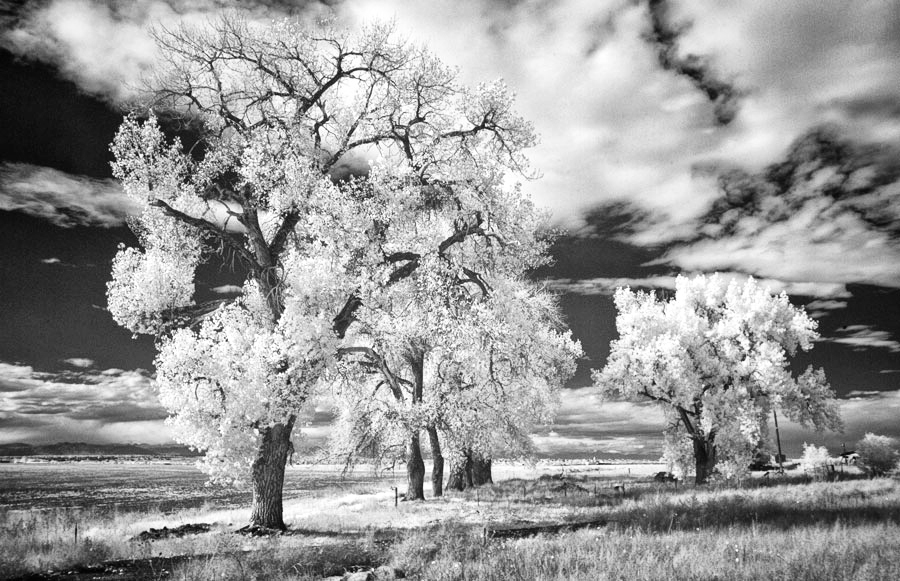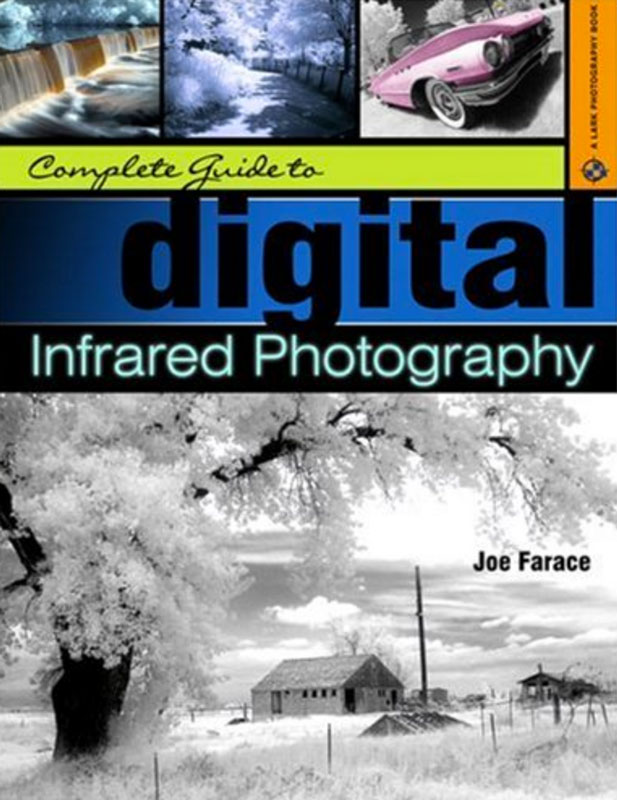Today’s Post by Joe Farace
Here in Colorado, spring is seemingly around the corner but we had snow last week. (March and April are the snowiest months in the state.) As I write this, only a few of the deciduous trees here on Daisy Hill, like the Ash are starting to show some tiny buds on the branches, as is the big lilac bush next to my garage, All of which means that means that infrared season may be around the corner.

Photography is all about light but where infrared photography is concerned you’ll be capturing images using invisible light, which is why comparisons to traditional photography are difficult to make. If you want to create a dramatic image, few things beat a beautiful sunrise photographed in color. The same scene photographed in infrared may be disappointing unless there’s some IR reflective subject matter to add interest. This is because of the “Wood Effect,” which is the bright to white reproduction of the chlorophyll layer that’s found in deciduous plants. The effect is named after infrared photography pioneer Robert W. Wood (1868-1955) and not after the material wood that, in fact, does not strongly reflect infrared. Deciduous trees, like those above, respond the most to the Wood Effect, while evergreens like the Ponderosa Pines that abound here on Daisy Hill, less so.
How I made this shot: I shot this image near Brighton, Colorado and not far from my former home. Camera used was a IR-converted Canon EOS 30D with Zenitar 16mm f/2.8 lens with an exposure of 1/400 sec at f/16 and ISO 400, with a plus two-thirds stop of exposure compensation. You can read more about this lens in Cheap Lenses Can Be a Good Investment on my car photography blog.
There are no “official” subjects for digital IR photography; Please read my post ‘Best Subjects for Infrared Photography’ on my car photography blog or my take on this. Sure, summertime landscapes with leafy deciduous trees, lots of grass, and puffy clouds make a great infrared picture but don’t be confined to basic landscapes. Some of the shooters that are profiled in my book, “The Complete Guide to Digital Infrared Photography,” (see below) even like to photograph people in IR. The truth is that any subject is fair game if you want to produce IR images.
Rule of thumb: If the lighting in a scene looks great for standard photographs, then it’s probably not going to work all that well for infrared. One of the reasons is that the peak time for shooting the best infrared photographs is around noon but don’t take my word for it. You need to experiment for yourself because you’ll never know for sure what the results will be, which is part of the joy of shooting infrared. My advice is to experiment and discover what works for you. You may be surprised at the variety of subject matter you can find for infrared photographs.
 I’ve found that Life Pixel does a great job with IR conversions and they’ve done conversions for some of my Canon DSLRs as well as all of my Panasonic Lumix G-series cameras, including a GX1 that uses their new Hyper Color conversion. This is not a paid nor sponsored endorsement, just my experience.
I’ve found that Life Pixel does a great job with IR conversions and they’ve done conversions for some of my Canon DSLRs as well as all of my Panasonic Lumix G-series cameras, including a GX1 that uses their new Hyper Color conversion. This is not a paid nor sponsored endorsement, just my experience.
My book, The Complete Guide to Digital Infrared Photography is available from Amazon for with used copies selling for $16.49, as I write this. New copies are expensive. Creative Digital Monochrome Effects has a chapter on IR photography and is available from Amazon with new copies at $33.65 with used copies starting at a little more than two bucks, as I write this.